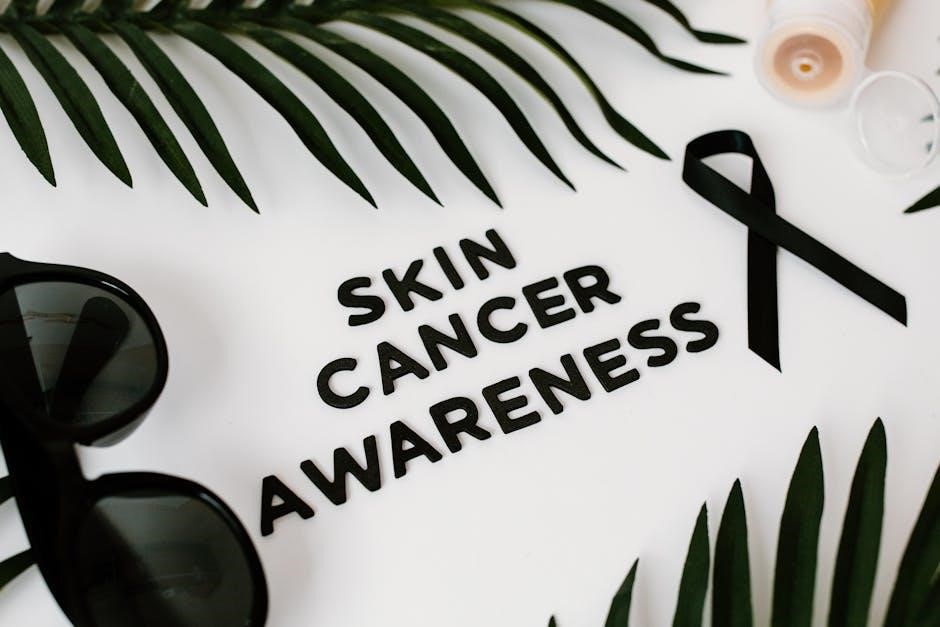Image-Guided Superficial Radiation Therapy (IG-SRT) is a non-invasive treatment using low-energy X-rays for non-melanoma skin cancers‚ offering precise targeting with minimal side effects‚ making it an effective alternative to surgery.
1.1 Definition and Overview of IG-SRT
Image-Guided Superficial Radiation Therapy (IG-SRT) is a non-invasive treatment that uses low-energy X-rays to target skin cancer lesions. It employs imaging technologies to guide precise radiation delivery‚ minimizing damage to surrounding healthy tissue. IG-SRT is primarily used for non-melanoma skin cancers‚ such as basal and squamous cell carcinomas‚ offering a highly effective and cosmetically favorable alternative to surgery.
1.2 Historical Development of Image-Guided Radiation Therapy
Image-guided radiation therapy evolved from early radiation treatments‚ with advancements in imaging modalities like X-rays‚ CT‚ and MRI. The integration of these technologies improved precision‚ leading to the development of IG-SRT. FDA clearance in 2013 for the SRT-100 Vision device marked a significant milestone‚ enabling non-invasive treatment for skin cancers with enhanced accuracy and patient outcomes.
1.3 Role of IG-SRT in Skin Cancer Treatment
IG-SRT plays a pivotal role in treating non-melanoma skin cancers‚ offering a non-invasive alternative to surgery. It effectively targets basal and squamous cell carcinomas while preserving healthy tissue. Its precision ensures high cure rates and excellent cosmetic outcomes‚ making it a preferred option for patients seeking minimally invasive care with reduced recovery time and complications.

Mechanism and Technology Behind IG-SRT
IG-SRT employs advanced imaging and low-energy X-rays to precisely target skin cancer lesions‚ minimizing damage to surrounding tissue and enhancing treatment accuracy through real-time guidance.
2.1 Imaging Modalities Used in IG-SRT
IG-SRT utilizes advanced imaging modalities‚ primarily ultrasound technology‚ to precisely visualize cancerous lesions. The SRT-100 Vision device integrates real-time imaging‚ enabling accurate targeting of tumor sites. This ensures minimal exposure to surrounding healthy tissue‚ enhancing treatment precision and safety. The use of low-energy X-rays‚ guided by detailed imaging‚ allows for effective tumor ablation while preserving skin integrity.
2.2 How Image Guidance Enhances Radiation Delivery
Image guidance in IG-SRT enhances radiation delivery by providing real-time visualization‚ ensuring accurate targeting of cancerous cells. This precision minimizes exposure to healthy tissue‚ reducing side effects. The integration of imaging technologies allows for adaptive treatment planning‚ improving dose delivery and outcomes. Enhanced visualization ensures that radiation is administered with optimal effectiveness‚ maximizing therapeutic results while maintaining patient safety and cosmetic outcomes.
2.3 The SRT-100 Vision Device and Its Role
The SRT-100 Vision‚ an FDA-cleared device‚ plays a pivotal role in IG-SRT by delivering low-energy X-rays for treating non-melanoma skin cancers and keloids. Its advanced imaging capabilities enable precise tumor visualization‚ ensuring accurate radiation delivery. This device enhances treatment efficacy while minimizing damage to surrounding healthy tissue‚ offering a safe and effective alternative to traditional therapies.

Clinical Applications of IG-SRT for Skin Cancer
IG-SRT effectively treats non-melanoma skin cancers like basal and squamous cell carcinomas‚ offering a non-invasive alternative to surgery with high efficacy and cosmetic outcomes for patients.
3.1 Non-Melanoma Skin Cancer (NMSC): Basal and Squamous Cell Carcinomas
IG-SRT is highly effective for basal and squamous cell carcinomas‚ the most common types of non-melanoma skin cancer. Using the FDA-cleared SRT-100 Vision device‚ this treatment delivers precise‚ low-energy X-rays to target cancer cells while sparing surrounding healthy tissue. Its non-invasive nature minimizes scarring and offers excellent cosmetic outcomes‚ making it a preferred option for patients seeking alternatives to surgery.
3.2 Treatment of Keloids with IG-SRT
IG-SRT is an FDA-cleared‚ non-invasive treatment for keloids‚ utilizing low-energy X-rays to effectively reduce their size and recurrence. This therapy offers a safe alternative to surgery‚ minimizing side effects and promoting excellent cosmetic results‚ making it a viable option for patients seeking non-surgical management of keloids.
3;3 Comparison with Other Treatments (e.g.‚ Mohs Surgery‚ Traditional SRT)
IG-SRT stands out as a non-invasive method‚ avoiding the scarring and recovery time of Mohs surgery. Unlike traditional SRT‚ IG-SRT employs advanced imaging for precision‚ enhancing efficacy and reducing side effects. Studies show superior cosmesis and comparable recurrence rates‚ making IG-SRT a favorable alternative for treating non-melanoma skin cancer.

Effectiveness and Outcomes of IG-SRT
IG-SRT demonstrates high cure rates and low recurrence for non-melanoma skin cancer‚ with excellent cosmetic outcomes‚ making it a highly effective treatment option.
4.1 Recurrence Rates and Long-Term Efficacy
Studies demonstrate that IG-SRT significantly reduces recurrence rates for non-melanoma skin cancer‚ with a two-year recurrence probability superior to traditional treatments. Long-term efficacy is supported by high cure rates and minimal tumor regrowth‚ making IG-SRT a reliable option for sustained cancer control.
4.2 Cosmetic Outcomes and Patient Satisfaction
IG-SRT offers excellent cosmetic outcomes‚ with minimal scarring and skin preservation‚ leading to high patient satisfaction. Patients appreciate the non-invasive nature‚ resulting in superior aesthetic results compared to surgery. Studies highlight that IG-SRT achieves better cosmesis‚ making it a preferred choice for individuals valuing both effectiveness and appearance preservation in skin cancer treatment.
4.3 Studies Comparing IG-SRT to Other Therapies
Studies demonstrate that IG-SRT offers superior local control and cure rates compared to traditional SRT and Mohs surgery. Its non-invasive nature and minimal cosmetic impact make it a preferred option; Research highlights IG-SRT’s efficacy in treating non-melanoma skin cancer‚ with higher patient satisfaction due to its precision and aesthetic outcomes‚ positioning it as a first-line treatment alternative to surgery.

Safety and Side Effects of IG-SRT
IG-SRT is safe‚ with a high safety profile due to low-energy X-ray technology. Common side effects include mild redness or irritation‚ typically temporary and well-managed.
5.1 Low Energy X-Ray Technology and Its Safety Profile
IG-SRT employs low-energy X-ray technology‚ which minimizes penetration depth‚ reducing exposure to healthy tissue. This approach ensures targeted treatment with fewer side effects‚ enhancing overall patient safety and tolerability. Studies highlight its safety profile‚ making it suitable for sensitive skin areas and reducing long-term risks compared to conventional radiation therapies.
5.2 Common Side Effects and Management
Common side effects of IG-SRT include mild skin redness‚ irritation‚ and dryness at the treatment site. In rare cases‚ scarring or pigmentation changes may occur. Management typically involves topical creams and moisturizers to soothe the skin. Sun protection is also recommended to minimize long-term effects. These side effects are generally mild and temporary‚ resolving within weeks post-treatment.
5.4 contraindications for IG-SRT
5.4 Contraindications for IG-SRT
Contraindications for IG-SRT include melanoma‚ pregnancy‚ and certain genetic conditions affecting DNA repair. Active keloid growth is not a contraindication‚ as IG-SRT is FDA-cleared for keloid treatment. Patients with unstable medical conditions or those unable to tolerate radiation exposure should also avoid this therapy. Consultation with a healthcare provider is essential to determine suitability for IG-SRT.

Advantages of IG-SRT Over Traditional Surgery
IG-SRT offers non-invasive treatment‚ minimal scarring‚ faster recovery‚ and precise radiation delivery‚ reducing the risks and downtime associated with traditional surgery for skin cancer patients.
6.1 Non-Invasive Nature and Reduced Recovery Time
IG-SRT is a non-invasive procedure that avoids surgical incisions‚ minimizing scarring and promoting faster healing. Patients typically resume normal activities immediately‚ with reduced recovery time compared to surgery‚ offering a convenient and effective treatment option for skin cancer management.
6.2 Precision and Targeted Radiation Delivery
IG-SRT employs advanced imaging technologies to deliver precise‚ targeted radiation‚ minimizing exposure to healthy tissue. This ensures accurate dose delivery to the tumor site‚ reducing side effects and improving outcomes. The use of real-time imaging enhances treatment accuracy‚ making IG-SRT a highly effective and efficient option for skin cancer treatment.
6.3 Cost-Effectiveness and Accessibility
IG-SRT is a cost-effective treatment option compared to invasive surgeries‚ reducing recovery costs and lost productivity. Its availability in outpatient settings enhances accessibility‚ especially for rural areas‚ making it a viable choice for many patients with non-melanoma skin cancer.

Challenges and Limitations of IG-SRT
Despite its effectiveness‚ IG-SRT faces challenges like limited availability in rural areas‚ insurance coverage issues‚ and technical challenges‚ affecting widespread adoption.
7.1 Availability and Accessibility of IG-SRT
IG-SRT remains limited in rural areas‚ with only select practices offering this treatment for non-melanoma skin cancer. Efforts to expand accessibility are ongoing‚ but availability still varies widely.
7.2 Technical and Operative Challenges
IG-SRT requires specialized equipment and trained personnel‚ posing challenges in resource-limited settings. Technical issues include device calibration and imaging accuracy‚ while operative challenges involve integrating IG-SRT into clinical workflows and ensuring consistent treatment delivery across diverse patient populations. Maintenance and updates of advanced imaging systems further complicate widespread adoption.
7.3 Insurance Coverage and Cost Considerations
Insurance coverage for IG-SRT varies‚ with some providers requiring pre-authorization. High equipment and operational costs can limit accessibility‚ especially in rural areas. Despite its effectiveness‚ cost barriers and reimbursement challenges hinder widespread adoption‚ impacting patient access to this advanced therapy for skin cancer treatment;

Future Directions and Innovations in IG-SRT
Emerging imaging technologies‚ such as AI-enhanced modalities‚ are expected to improve precision. Combination therapies and expanded indications for IG-SRT show promise for treating other skin conditions and cancers‚ enhancing its versatility and reach in dermatology.
8.1 Emerging Imaging Technologies for Enhanced Precision
Advancements in imaging‚ such as AI-enhanced ultrasound and cone-beam CT‚ are improving IG-SRT’s accuracy. These technologies enable real-time tumor tracking‚ allowing for more precise radiation delivery and better outcomes in skin cancer treatment.
8.2 Combination Therapies and Multimodal Approaches
Combining IG-SRT with immunotherapy‚ photodynamic therapy‚ or chemotherapy shows promise in enhancing treatment outcomes. These multimodal approaches target cancer cells more effectively while minimizing damage to healthy tissue‚ offering a comprehensive strategy for complex or advanced skin cancer cases.
8.3 Expanding Indications for IG-SRT
Research is exploring IG-SRT’s potential for treating other dermatological conditions‚ such as benign lesions and certain metastatic skin cancers. Advances in imaging and technology are enabling its application beyond non-melanoma skin cancer‚ with clinical trials investigating its efficacy for rare skin tumors and keloid management‚ offering hope for broader therapeutic applications.

Patient Selection and Criteria for IG-SRT
IG-SRT is ideal for early-stage non-melanoma skin cancer‚ small tumors‚ and patients seeking non-invasive treatment. Key criteria include tumor size‚ depth‚ and patient health status.
9.1 Ideal Candidates for IG-SRT
Ideal candidates for IG-SRT are patients with early-stage non-melanoma skin cancer‚ such as basal or squamous cell carcinoma‚ in sensitive or hard-to-treat areas. Those seeking non-invasive treatment‚ avoiding surgery‚ or with medical conditions that complicate surgical procedures are also suitable. Tumors should be small‚ well-defined‚ and localized to ensure optimal outcomes with minimal side effects.
9.2 Tumor Characteristics and Staging
Tumors suitable for IG-SRT are typically small‚ localized‚ and early-stage non-melanoma skin cancers‚ such as basal or squamous cell carcinoma. Ideal candidates have tumors with minimal thickness (often <2mm Breslow depth) and well-defined margins. Advanced or metastatic cancers are generally not suitable. Tumor staging and characteristics are critical in determining eligibility for this precise‚ non-invasive treatment approach.
9.3 Patient-Specific Factors Influencing Treatment Choice
Patient age‚ overall health‚ and cosmetic preferences significantly influence IG-SRT selection. Elderly patients or those with comorbidities may benefit from its non-invasive nature. Cosmetic outcomes and desire to avoid surgery also play a role. IG-SRT is ideal for patients seeking minimal scarring and rapid recovery‚ aligning with personal and medical priorities while ensuring effective treatment for skin cancer.
IG-SRT has emerged as a highly effective‚ non-invasive treatment for non-melanoma skin cancer‚ offering minimal side effects and excellent cosmetic outcomes‚ making it a preferred choice for patients prioritizing convenience and aesthetics.
10.1 Summary of IG-SRT Benefits and Potential
Image-Guided Superficial Radiation Therapy (IG-SRT) offers a non-invasive‚ low-energy X-ray treatment for non-melanoma skin cancer‚ providing high efficacy‚ excellent cosmetic outcomes‚ and minimal side effects. Its precise targeting and non-surgical approach make it a preferred option for patients seeking effective‚ convenient‚ and aesthetically favorable solutions‚ positioning it as a promising advancement in skin cancer care.
10.2 The Future of Image-Guided Radiation Therapy in Dermatology
Image-Guided Radiation Therapy (IGRT) in dermatology is poised for growth‚ with advancements in imaging technologies and device innovations. Emerging modalities like enhanced ultrasound and AI-driven systems promise greater precision and accessibility. As IG-SRT gains acceptance‚ its potential to treat a broader range of skin conditions and reduce invasive procedures underscores its transformative role in modern dermatologic care.
10.3 Final Thoughts on IG-SRT for Skin Cancer
IG-SRT represents a paradigm shift in skin cancer treatment‚ offering a non-invasive‚ effective‚ and cosmetically favorable option. Its ability to deliver precise radiation while sparing healthy tissue makes it a promising alternative to surgery. As research evolves‚ IG-SRT is likely to become a cornerstone in dermatologic oncology‚ improving patient outcomes and quality of life for those with skin cancer.
